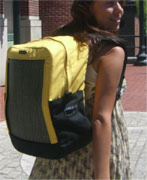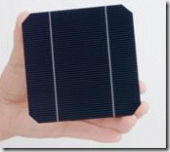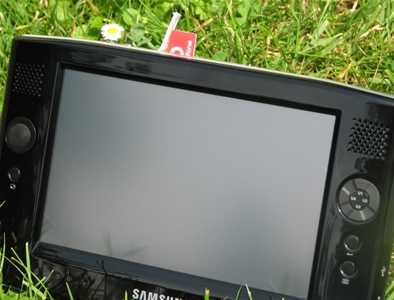 Its decision time on the UMPC and I think I’ve just about come to my conclusion – The Samsung Q1b HSDPA. Its not perfect but it covers the important requirement of efficiency very well. Maybe in a few more months there will be better options but right now I need to focus on one device and start testing and getting used to it.
Its decision time on the UMPC and I think I’ve just about come to my conclusion – The Samsung Q1b HSDPA. Its not perfect but it covers the important requirement of efficiency very well. Maybe in a few more months there will be better options but right now I need to focus on one device and start testing and getting used to it.
Let me take you through the reasoning though. You might be thinking about the same thing yourself so I’ll list my requirements and then go through the options.
Requirements.
- Power efficient. Obviously. I’m looking for sub 10W average power drain for a total power budget of under 60W per day. (More on the power-budget in another post.)
- Lightweight. All UMPCs are lightweight. This shouldn’t be a problem.
- Bright screen. Some are better than others and when you’re outside, this can make a huge difference. Put it this way, I’d rather be sitting on the terrace of a cafe rather than inside on my own!
- Keyboard. I’m going to be doing a lot of typing so this is going to be an important requirement. Nearly all built-in keyboards are nothing more than thumbboards. I will have to consider external keyboards
- Protective case. A slip case isn’t going to be enough. I need a very good protective case. Preferably rugged.
- Ruggedness. 8 days on the road is going to be tough on a UMPC. I’m concerned about dust and the hard drive.
- Bluetooth connectivity (for data through mobile phone). There are other connectivity options including connecting a mobile phone via USB and getting a UMPC with built in 3G data modem.
- SD card slot for digital camera images.
- Extended battery. Generally the batteries with UMPCs are around 20-30W/hr types. an extended battery is going to make charging easier.
- Reliable. A proven track record is important.
- Cost effective. Upper limit is around 1500 Euro for all UMPC equipment.
I have already chosen VIA as the platform I will use. Intel is powerful but can start to sap power very quickly is not used carefully. One stray process and you can eat 15W in an hour. I don’t want that to happen. AMD is another option and there are some nice low power solutions around. The only problem is that the processing power of the AMD solutions is limited. I have edited a couple of movies on an AMD platform and it was a long process. I can not afford to leave the PC for one hour crunching videos and sapping energy.
VIA have been on the UMPC scene since the Origami launch in March 2006 and the core of their solution is the C7-M ULV CPU. Its available in 1, 1.2 and 1.5Ghz versions but until recently, only the 1Ghz versions have appeared in UMPCs. Amtek (OEM), Samsung and Uren are really the only manufacturers that already have VIA-based UMPCs on the market and although there are three more available this month, they are new, untested and not available for immediate delivery.
 The T700 was the first VIA-based UMPC. Its a basic device compared to some of the UMPCs we’re seeing today with a simple style, no SD and no web cam. It has proven to be a solid device though. It has an extended battery and there are bump cases available for it. Its also good value. You can pick up branded versions for under $800. The big problem with the Amtek T700 though is its average battery life. 11-12W drain is normal. It is also lacking the SD card slot required.
The T700 was the first VIA-based UMPC. Its a basic device compared to some of the UMPCs we’re seeing today with a simple style, no SD and no web cam. It has proven to be a solid device though. It has an extended battery and there are bump cases available for it. Its also good value. You can pick up branded versions for under $800. The big problem with the Amtek T700 though is its average battery life. 11-12W drain is normal. It is also lacking the SD card slot required.
 The second option is the Q1b from Samsung. This is the VIA version of the Q1, another UMPCs released as part of the Origami project from Microsoft. Its a slightly more attractive design and comes with a 280nits screen. Brighter than the T700. Again there’s no mouse and no SD card slot but bump cases and even a specially made Samsung organiser pack with keyboard is available. In fact, I’m using one to type this right now and its a very very nice keyboard. The other major advantage of the Q1b is its battery life. It can average well below 10W and is even reported to run in a battery saving mode with low-backlight for 4 hours. That’s about 8W average drain. Again, its a good value buy although its not available in its basic form in Europe because Samsung introduced it here in Germany with a built in HSDPA modem, bigger disk and more memory. Potentially a great advantage but the price is quite a bit more than the T700 is available for. It would stretch the budget when taking into consideration the keyboard and protective cover.
The second option is the Q1b from Samsung. This is the VIA version of the Q1, another UMPCs released as part of the Origami project from Microsoft. Its a slightly more attractive design and comes with a 280nits screen. Brighter than the T700. Again there’s no mouse and no SD card slot but bump cases and even a specially made Samsung organiser pack with keyboard is available. In fact, I’m using one to type this right now and its a very very nice keyboard. The other major advantage of the Q1b is its battery life. It can average well below 10W and is even reported to run in a battery saving mode with low-backlight for 4 hours. That’s about 8W average drain. Again, its a good value buy although its not available in its basic form in Europe because Samsung introduced it here in Germany with a built in HSDPA modem, bigger disk and more memory. Potentially a great advantage but the price is quite a bit more than the T700 is available for. It would stretch the budget when taking into consideration the keyboard and protective cover.
 Finally, there’s the Uren V1. Unfortunately this one is very quickly out of the running because it’s not available at outside Asia. Its also a car-focused UMPC. The most difficult thing about the Uren though, is that no-one has really written any reports about it in English. Its certainly not a UMPC that I’ve been able to get hold of and test so at this stage it goes straight to the bottom of the list.
Finally, there’s the Uren V1. Unfortunately this one is very quickly out of the running because it’s not available at outside Asia. Its also a car-focused UMPC. The most difficult thing about the Uren though, is that no-one has really written any reports about it in English. Its certainly not a UMPC that I’ve been able to get hold of and test so at this stage it goes straight to the bottom of the list.
So there you have three UMPCs. One looks like good value and capable. The other looks like its perfect for the job but expensive and the other is out-of-reach. I mentioned a budget of 1500 Euro for the UMPC. This includes the cost of protective cover, keyboard and extended battery. When I add up the costs of the Q1B HSDPA, the organiser pack (with the wonderful keyboard) and an extended battery I come to just under 1500 Euro. Phew! I’ve even got some spare change for a USB-SD adaptor. The Q1B HSDPA it is then and as you might have seen on UMPCportal.com, I have already taken delivery of one. Unfortunately it had a faulty USB port so its gone back but the short time I spent with it was really nice. The HSDPA modem is going to be a great advantage and I’ve already transferred the data portion of my Vodafone tariff to a new SIM card. No messing with Bluetooth or cables and no worrying about keeping the mobile phone charged. If the phone dies there’s always skype!
 there wasn’t much there for consumers at all. It was all 200w, $1000 panels and huge thermal heating set-ups. I saw one company that was selling the Voltaic Solar Backpack but I’ve already assessed this product and at 4W max output, its not powerful enough. I was rather hoping to see someone with the Reware Juicebag which, at 6.3W is much more useful.
there wasn’t much there for consumers at all. It was all 200w, $1000 panels and huge thermal heating set-ups. I saw one company that was selling the Voltaic Solar Backpack but I’ve already assessed this product and at 4W max output, its not powerful enough. I was rather hoping to see someone with the Reware Juicebag which, at 6.3W is much more useful.  One bit of relevant news from yesterday which came through RSS and has spawned another bit of research was that Sanyo have broken the record for a production solar cell. We’re up to 22% now. In theory, the cell on the left here, a 10x10cm device, should be able to generate over 2W. 100cm2 is about the same area as the face of a UMPC. 4W is the target average power consumption that Intel have set for devices based on Menlow, their UMPC platform for 2008. The interesting thing that I’ve found out is that this cell (or at least the previous
One bit of relevant news from yesterday which came through RSS and has spawned another bit of research was that Sanyo have broken the record for a production solar cell. We’re up to 22% now. In theory, the cell on the left here, a 10x10cm device, should be able to generate over 2W. 100cm2 is about the same area as the face of a UMPC. 4W is the target average power consumption that Intel have set for devices based on Menlow, their UMPC platform for 2008. The interesting thing that I’ve found out is that this cell (or at least the previous  version of it) appears in the Sanyo Eneloop solar charger. The charger houses a Li-Ion battery which can store enough energy to charge 4x2000mah batteries. That’s about 10W if my maths is correct. The only problem is the quoted 6 DAYS charging time for the internal Li-Ion battery. I suspect that the cell isn’t exactly being used that efficiently because as I said before, that 10×10 cell should be able to kick out 2W, enough to charge the batteries in a few full days of sun. This little bit of tech will set you back over $150. Eek!
version of it) appears in the Sanyo Eneloop solar charger. The charger houses a Li-Ion battery which can store enough energy to charge 4x2000mah batteries. That’s about 10W if my maths is correct. The only problem is the quoted 6 DAYS charging time for the internal Li-Ion battery. I suspect that the cell isn’t exactly being used that efficiently because as I said before, that 10×10 cell should be able to kick out 2W, enough to charge the batteries in a few full days of sun. This little bit of tech will set you back over $150. Eek!
















